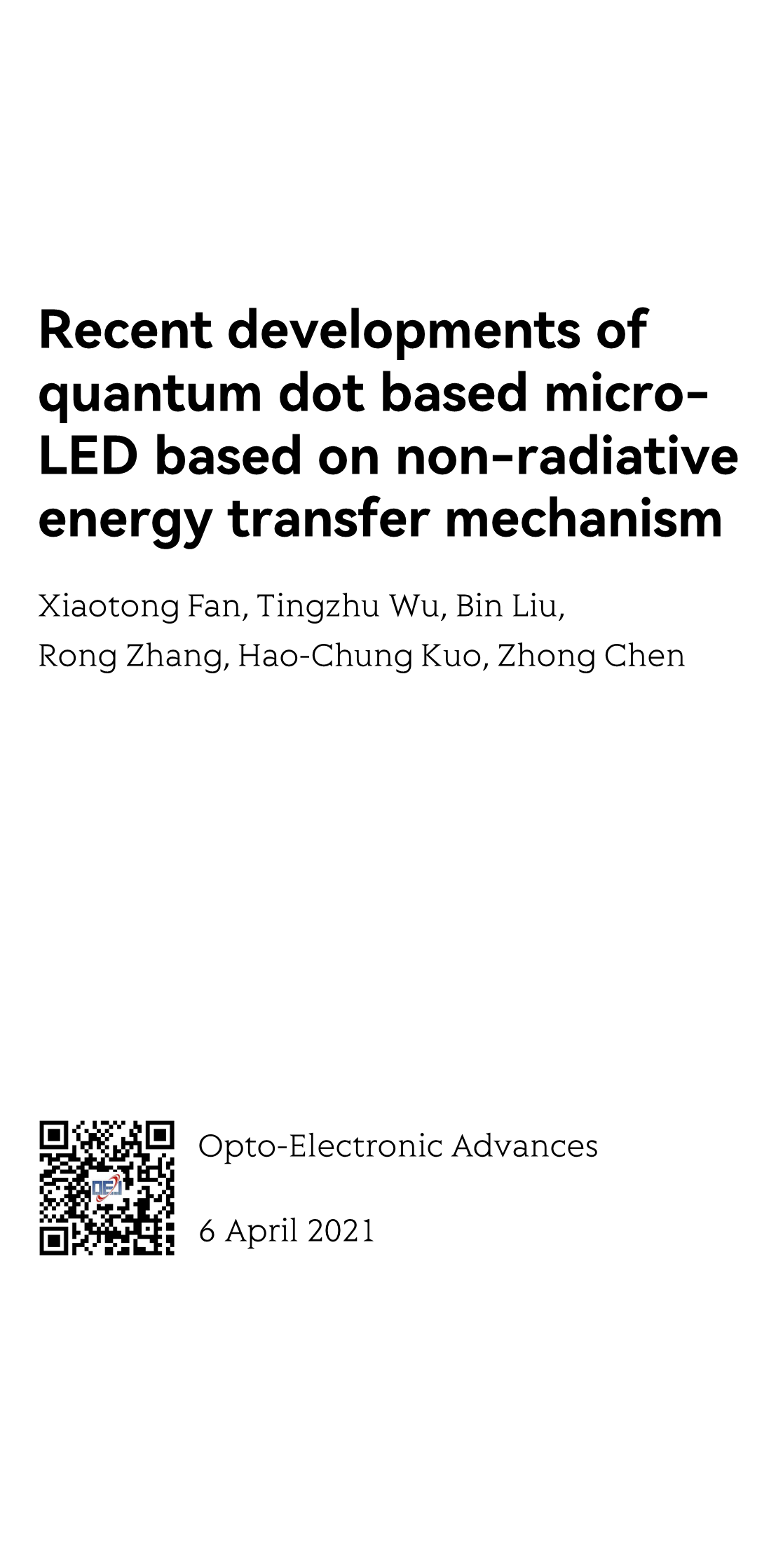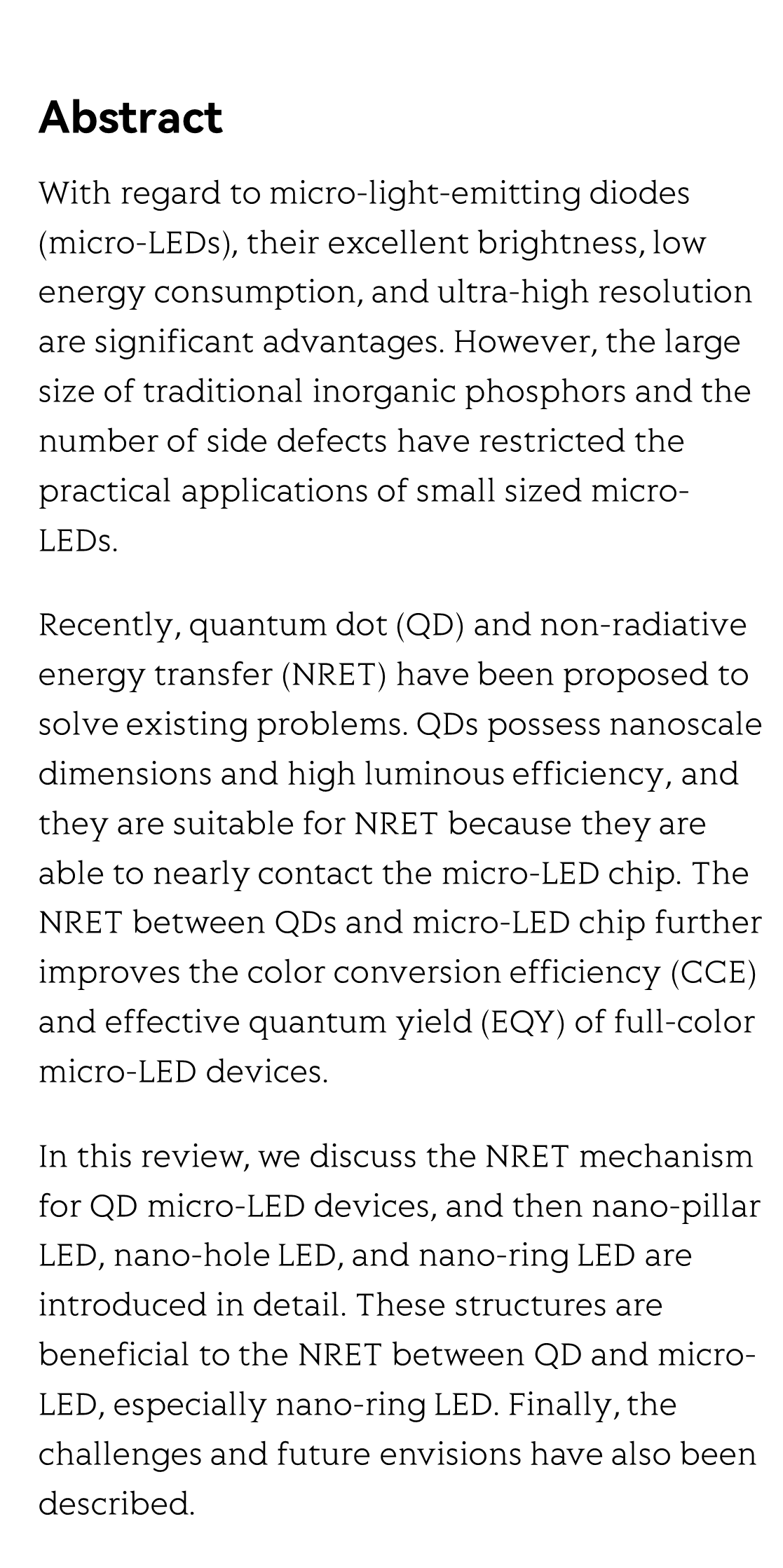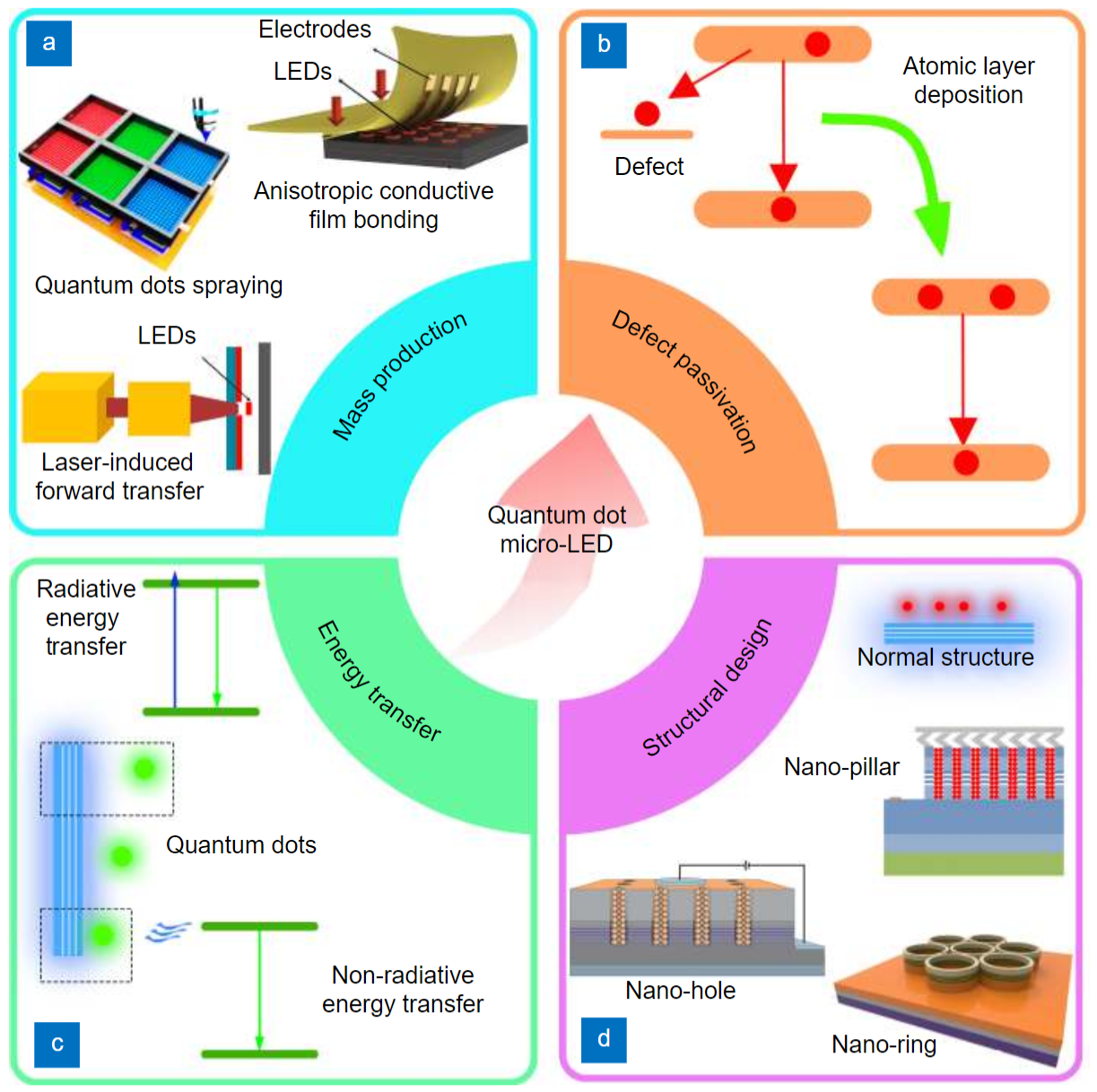(Peer-Reviewed) Recent developments of quantum dot based micro-LED based on non-radiative energy transfer mechanism
Xiaotong Fan 范小通 ¹, Tingzhu Wu 吴挺竹 ¹ ², Bin Liu 刘斌 ³, Rong Zhang 张荣 ¹ ³, Hao-Chung Kuo 郭浩中 ⁴, Zhong Chen 陈忠 ¹ ²
¹ School of Electronic Science and Engineering, Fujian Engineering Research Center for Solid-State Lighting, Xiamen University, Xiamen 361005, China
中国 厦门 厦门大学电子科学与技术学院 福建省半导体照明工程技术研究中心
² Fujian Science & Technology Innovation Laboratory for Energy Materials of China, Xiamen 361005, China
中国 福建 中国福建能源材料科学与技术创新实验室
³ Jiangsu Provincial Key Laboratory of Advanced Photonic and Electronic Materials, Nanjing National Laboratory of Microstructures, School of Electronic Science and Engineering, Nanjing University, Nanjing 210093, China
南京大学电子科学与工程学院 江苏省先进光学制造技术重点实验室 南京微结构物理国家重点实验室
⁴ Department of Photonics and Graduate Institute of Electro-Optical Engineering, College of Electrical and Computer Engineering, Chiao Tung University, Hsinchu 30010, China
中国 新竹 台湾交通大学电机学院 光电工程学系 光电研究所
Opto-Electronic Advances, 2021-04-06
Abstract
With regard to micro-light-emitting diodes (micro-LEDs), their excellent brightness, low energy consumption, and ultra-high resolution are significant advantages. However, the large size of traditional inorganic phosphors and the number of side defects have restricted the practical applications of small sized micro-LEDs.
Recently, quantum dot (QD) and non-radiative energy transfer (NRET) have been proposed to solve existing problems. QDs possess nanoscale dimensions and high luminous efficiency, and they are suitable for NRET because they are able to nearly contact the micro-LED chip. The NRET between QDs and micro-LED chip further improves the color conversion efficiency (CCE) and effective quantum yield (EQY) of full-color micro-LED devices.
In this review, we discuss the NRET mechanism for QD micro-LED devices, and then nano-pillar LED, nano-hole LED, and nano-ring LED are introduced in detail. These structures are beneficial to the NRET between QD and micro-LED, especially nano-ring LED. Finally, the challenges and future envisions have also been described.
Flicker minimization in power-saving displays enabled by measurement of difference in flexoelectric coefficients and displacement-current in positive dielectric anisotropy liquid crystals
Junho Jung, HaYoung Jung, GyuRi Choi, HanByeol Park, Sun-Mi Park, Ki-Sun Kwon, Heui-Seok Jin, Dong-Jin Lee, Hoon Jeong, JeongKi Park, Byeong Koo Kim, Seung Hee Lee, MinSu Kim
Opto-Electronic Advances
2025-09-25
Dual-frequency angular-multiplexed fringe projection profilometry with deep learning: breaking hardware limits for ultra-high-speed 3D imaging
Wenwu Chen, Yifan Liu, Shijie Feng, Wei Yin, Jiaming Qian, Yixuan Li, Hang Zhang, Maciej Trusiak, Malgorzata Kujawinska, Qian Chen, Chao Zuo
Opto-Electronic Advances
2025-09-25





